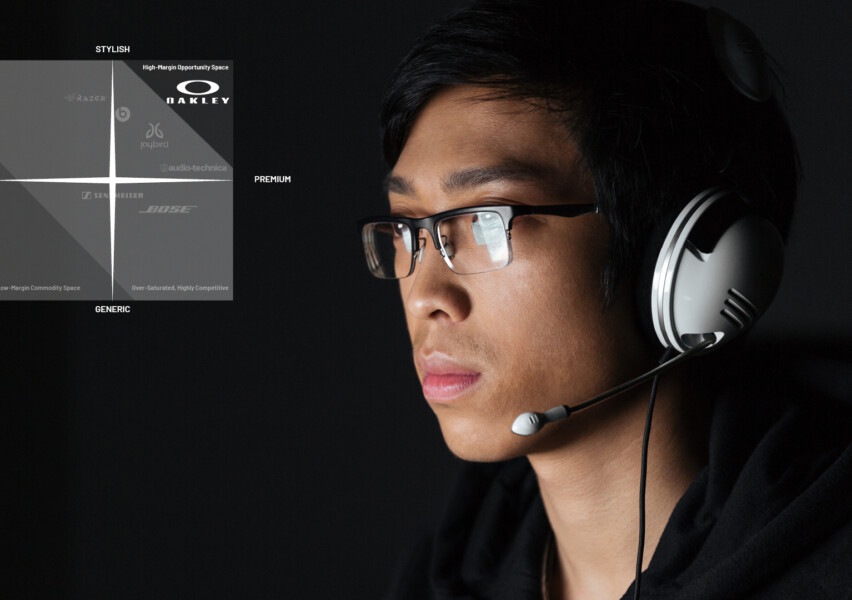Client
- Oakley
Date
- January - April 2017
Key Deliverables
- Competitive Strategy
- User Research Insights
- Product Design Concept
- Physical Appearance Model
THE MISSION
Oakley is a multinational American brand that designs, develops and manufactures sports performance equipment and lifestyle products. Founded in 1975, Oakley does $1.2 billion in revenue and currently holds more than 600 patents for eyewear, materials, and performance gear. Most of Oakley’s technological products were developed with extensive athlete input and testing in the field–including extreme conditions. Oakley also maintains US Standard Issue, which provides U.S. military and law enforcement eye protection.
In an effort to explore potential new product lines, the design team at Oakley approached me and my colleagues to form an educational partnership. We were each asked to envision and pitch over-ear headphone concepts that would have an edge in a saturated market.
"How might Oakley take on the over-ear headphones industry?"
Designing the concept
The key to entering a highly competitive market, such as the headphones market, is product differentiation. The new entrant must offer an unique and compelling value proposition to stand out from the crowd. By cross-referencing my market research and Oakley’s brand perception, I found a value-gap in long-term comfort, specifically for marathon gamers. Using my research insights to guide the idea generation process, I condensed a novel approach to maximizing long-term comfort: vented earpads.
As a product under the Oakley brand, I chose to leverage their affinity towards emerging manufacturing technologies and advanced materials to design earpads via generative modeling and flexible 3D printing.
With a goal of maximizing long-term comfort, ergonomic considerations are paramount. During form development, it’s necessary to work at scale with physical mockups. As well as, using 3d scans of head anatomy for fit and sizing in CAD environments.
My design strategy targeted two dimensions: dissipating heat and reducing pressure. I addressed the former by allowing free airflow through the earpads, and the latter with extra-wide earcups.














